 https://california-business-lawyer-corporate-lawyer.com/wp-content/uploads/2025/12/Is-Weight-Discrimination-Illegal-in-California-A-Clear-Look-at-Protections-Risks-and-Employer-Duties.jpg
803
1196
Amit
http://california-business-lawyer-corporate-lawyer.com/wp-content/uploads/2022/05/Nakase-Wade-logo-transparent-200x54px.png
Amit2025-12-19 12:36:022025-12-19 12:36:04Is Weight Discrimination Illegal in California? A Clear Look at Protections, Risks, and Employer Duties
https://california-business-lawyer-corporate-lawyer.com/wp-content/uploads/2025/12/Is-Weight-Discrimination-Illegal-in-California-A-Clear-Look-at-Protections-Risks-and-Employer-Duties.jpg
803
1196
Amit
http://california-business-lawyer-corporate-lawyer.com/wp-content/uploads/2022/05/Nakase-Wade-logo-transparent-200x54px.png
Amit2025-12-19 12:36:022025-12-19 12:36:04Is Weight Discrimination Illegal in California? A Clear Look at Protections, Risks, and Employer Duties
By: Brad Nakase, Attorney
Email | Call (800) 484-4610
California workplaces should be a safe and secure place to earn a living. Employees should not experience harassment, threats, or bullying based on protected characteristics. Employers have a duty to ensure their workplace is free of unlawful behavior and bullying.
Workplace Bullying in California: How Do Laws Protect Employees?
Several labor laws protect employees from workplace bullying, including:
- FEHA
- ADA
- Title VII of the Civil Rights Act of 1964
A lot of federal and state laws will overlap to protect different types of employees or offer additional protections. In California, the employer must comply with the law that offers the most protection for employees. The FEHA will offer the most protection in the majority of cases.
What Characteristics Are Protected in California Workplaces?
Workplace bullying only becomes unlawful if the bullying is based on protected characteristics. This creates a hostile workplace. Protected characteristics include:
- Age
- Disability
- Gender
- Martial status
- National origin
- Pregnancy
- Race
- Religion
- Sex
- Sexual orientation
What Actions May Be Considered Workplace Bullying?
Workplace bullying may take a number of different forms, such as teasing, jokes, and threats. Ill intent is not necessary for there to be workplace bullying. Someone may make a joke that is offensive or upsetting to someone and create a hostile work environment.
California courts will consider the workplace context, the severity of the conduct, and how often it occurs. The higher the frequency and severity of the bullying, the more likely a court is to find a hostile work environment. The employer will be held accountable for the hostile work environment regardless of whether they were aware of the situation.
Policies and Practices That May Lead to Bullying
The workplace culture will contribute to the likelihood of workplace bullying. Some of the cultures which increase the risk of bullying include:
- Disorganization
- High-stress jobs
- Demanding jobs
- Job insecurity
- Layoffs
- Competitive environments
Another large contributor to workplace bullying is employer practices like:
- No strong anti-bullying policies
- Lack of management investigation into bullying and abuse claims
- Abuse from leaders
- Failure to provide regular training
- Lack of accountability and discipline procedures
- Lack of consistent discipline
The EEOC advises employers to prevent workplace bullying by committing to positive company values and having accountability and discipline procedures that are enforced.
Can I Sue For Workplace Bullying?
If workplace bullying becomes harassment, you are more likely to win a lawsuit. Employees must show that the behavior caused a hostile workplace in order to sue.
The following behavior is considered harassment:
- Physical harassment like assault, physically interfering with movement or work, or unwanted touching.
- Verbal harassment like slurs, demeaning comments, threats, or obscene language.
- Visual harassment like offensive drawings, objects, cartoons, or posters.
- Unwanted sexual advances
- Other harassment like offensive photographs, internet posts, or text messages.
The success of the harassment lawsuit will be based on the frequency and severity of the conduct. A single extremely severe incident may be sufficient to show a hostile workplace, but generally, the court will require several incidents.
How to Prevent Workplace Bullying
California employers must provide training to their employees to prevent abuse and harassment. Abusive conduct is malicious behavior that would reasonably be found as offensive or hostile. This includes:
- Sabotaging work performance
- Undermining work performance
- Humiliation
- Intimidation
- Threats
- Verbal abuse
For an employee to file a hostile workplace claim, the behavior must occur repeatedly or be extremely severe.
Learn more about: Business | Corporate | Employment
 https://california-business-lawyer-corporate-lawyer.com/wp-content/uploads/2025/12/Is-Weight-Discrimination-Illegal-in-California-A-Clear-Look-at-Protections-Risks-and-Employer-Duties.jpg
803
1196
Amit
http://california-business-lawyer-corporate-lawyer.com/wp-content/uploads/2022/05/Nakase-Wade-logo-transparent-200x54px.png
Amit2025-12-19 12:36:022025-12-19 12:36:04Is Weight Discrimination Illegal in California? A Clear Look at Protections, Risks, and Employer Duties
https://california-business-lawyer-corporate-lawyer.com/wp-content/uploads/2025/12/Is-Weight-Discrimination-Illegal-in-California-A-Clear-Look-at-Protections-Risks-and-Employer-Duties.jpg
803
1196
Amit
http://california-business-lawyer-corporate-lawyer.com/wp-content/uploads/2022/05/Nakase-Wade-logo-transparent-200x54px.png
Amit2025-12-19 12:36:022025-12-19 12:36:04Is Weight Discrimination Illegal in California? A Clear Look at Protections, Risks, and Employer Duties
Can I Refuse to Sign a Written Warning at Work?
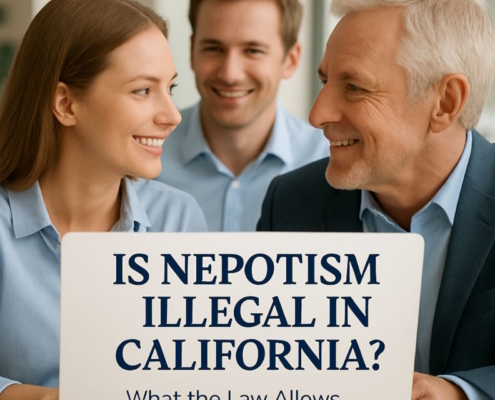
Is Nepotism Illegal in California? What the Law Allows and Prohibits

Salary Requirements California: Minimum Pay, Exempt Status, and Overtime Rules

Borello Test Explained: Worker Classification Rules in California
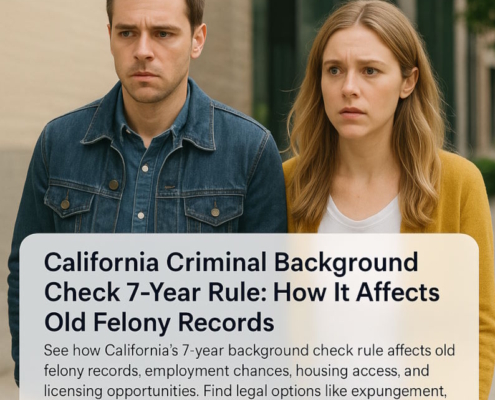
California Criminal Background Check 7-Year Rule: How It Affects Old Felony Records

How to Get Your Guard Card in California: Training, Steps, and Requirements

Vacation Pay for Salaried Employees in California: Rights, Accrual Rules, and Payout Requirements

California Salary Threshold 2026: Minimum Wage Increase, Exempt Employee Rules, and Compliance Checklist

How Long Do Employers Have to Keep W-2s: Record Retention Rules for Businesses

PAGA Notice Statute of Limitations: California Deadlines for Filing Claims

California Class Action Lawsuit Basics for Workers and Consumers
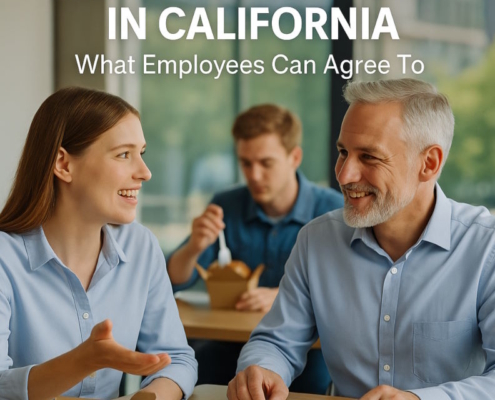
Meal Break Waiver in California: What Employees Can Agree To

Predictive Scheduling Laws: State and City Requirements for Employers
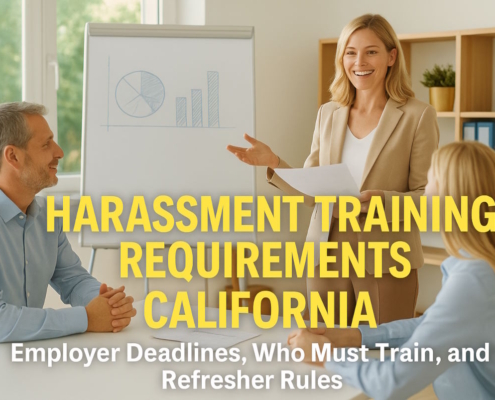
Harassment Training Requirements California: Employer Deadlines, Who Must Train, and Refresher Rules

Inside Sales Exemption California: Rules on Pay, Breaks, and Commissions

How Many Hours Can a Volunteer Work per Day in California? Laws, Limits, and Rights Explained

Show Up Pay California: Employee Rights for Being Sent Home Early or Given Short Shifts

Can Managers Take Tips in California? Laws, Tip Pools & SB 648

Can Owners Take Tips in California? A Complete Guide to State Tip Laws and Employee Rights
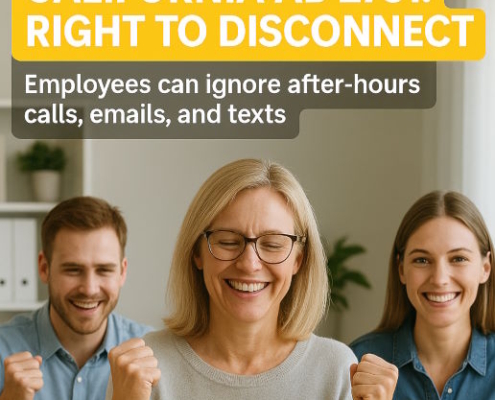
Right to Disconnect Laws in California: AB 2751 for Employers and Employees

Defamation California: Key Laws, Legal Defenses, and Damages Explained

What Is a Level 1 Background Check and How It Differs from Level 2
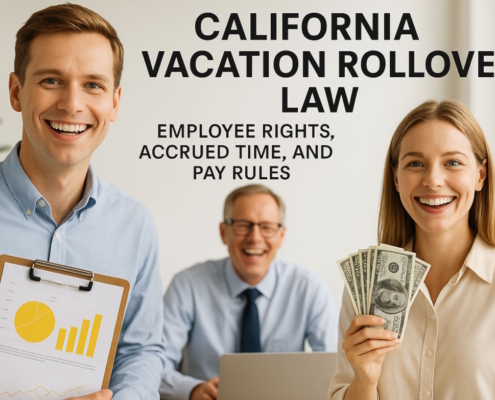
California Vacation Rollover Law: Employee Rights, Accrued Time, and Pay Rules
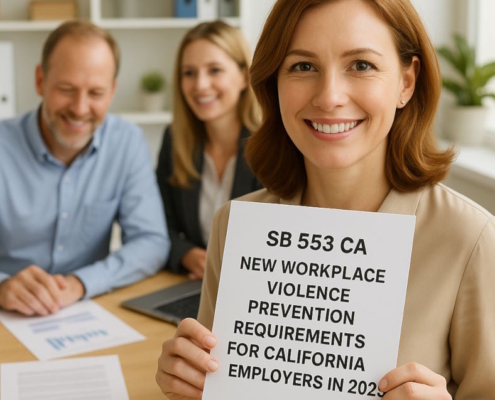
SB 553 CA: New Workplace Violence Prevention Requirements for California Employers in 2025

Labor Code 226.7: California Meal and Rest Break Requirements and Employer Penalties

Building an Onboarding Packet That Welcomes and Retains Employees

Complete Guide to New Employee Paperwork: Required Forms and Documents for 2025
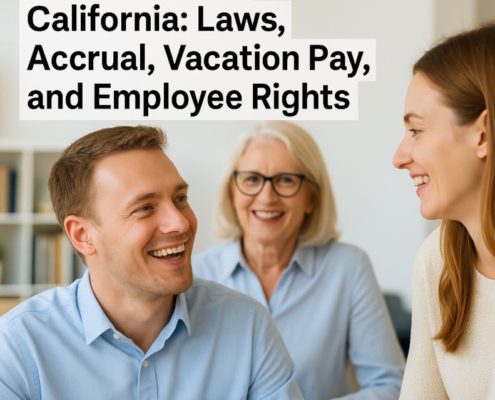
Paid Time Off California: Laws, Accrual, Vacation Pay, and Employee Rights

Can employers test for THC in California for hiring and workplace safety?
See all articles: Business | Corporate | Employment
